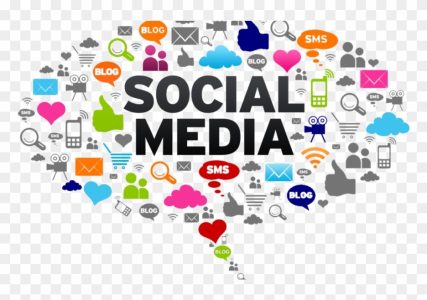Widgetized Section
Go to Admin » Appearance » Widgets » and move Gabfire Widget: Social into that MastheadOverlay zone
Social Media: The Good, the Bad and the Ugly
The views expressed are those of the author and do not necessarily reflect the views of ASPA as an organization.
By Renée Cardarelle
February 3, 2025

Social media has become a part of how we communicate in the world today. Whether it is Facebook, X, Instagram or another form of social media, these platforms have a number of benefits and can provide an effective way to communicate with large numbers of people spanning across vast distances. However, they also have the potential to cause great harm. Many public administrators have fallen victim to the ugly side of social media, as they or their departments have been targeted by misinformation or angry, divisive comments. As a result, some are choosing to back away from using social media altogether. Yet, avoiding social media ignores the benefits the tool brings, including a fast and effective means of communication. So exactly what are the best practices for using this tool?
When talking to local city administrators in the rural Midwest, they were able to identify both challenges and opportunities to using social media. For some, the platform offered a great way to communicate important information such as public hearings, citywide activities like clean-up days and other notices to a generally apathetic public. As a communication tool, social media is also easy to use, relatively inexpensive and always available to large numbers of people, including members of the public who have been traditionally hard to reach. In addition, social media has the potential to help educate the public on the ins and outs of how the governing process works.
However, many of these city administrators also acknowledged the negatives of using social media, the biggest one being the public’s tendency to use social media as a platform for venting. This type of emotive outpouring can cause disruption and even derailment of projects and more importantly can be harmful to individuals who are targeted. As one city administrator in Minnesota said, “You don’t want it go and open up Facebook at 10 o’clock at night because you’re gonna see comments that you can’t change.”
This tendency for people to use social media as a method for communicating their anger and outrage is perhaps one of the biggest determinants of the tool. Rather than opening up communication and allowing for productive conversations, venting on social media shuts down communication. Often times the individuals involved are intent on defending their positions and are not looking to understand or resolve the situation. As a result, responding to a rant on social media, no matter how good the intent, can worsen the situation.
So how are city administrators dealing with the potentially harmful and disruptive use of social media as a public venting space? To start, they agreed social media was an important communication tool and used it to alert the public to activity happening in the city, not as a replacement for more traditional forms of communication, but as a supplement. They also said it was important to keep track of what was being said on social media and many believed it helped them keep a pulse on what was happening in the community. However, almost universally they stated it was counterproductive to engage with individual rants on social media. They noted that even providing accurate information often resulted in a heightening of the situation instead of fostering resolutions. Rather than responding to heated individual posts, no matter how tempting, they focused on providing updated information on their main page or on their own posts as a method of countering inaccuracies. They also encouraged people who were frustrated to come into the office to have a conversation about solutions, when appropriate.
Social media has certainly impacted how we communicate in today’s world. It can help spread information, provide updates and reach people who are hard to reach, but it can also be harmful and derail projects, spread misinformation and harm individuals. To effectively use this tool, public administrators need to think carefully about how they are engaging with the public. Social media is a fine place for disseminating information and providing updates, but it is not a place of social deliberation and engagement and can actually close down conversation. Instead, public administrators should focus on posting factual information, including information on how governing processes work. They should never engage with an individual who is ranting on social media. A better solution is to offer everyone the opportunity to come in and discuss issues in person with the goal of working toward solutions. While social media has given us new tools of communication, in the end the best method for working through issues continues to be face to face.
Author: Renée Cardarelle has a PhD in Management and Public Service from Hamline University with a focus on public participation in the governing process. In addition to her work in academia, Renée has also work with the nonprofit sector and in grassroots organizing for more than twenty years.


Follow Us!